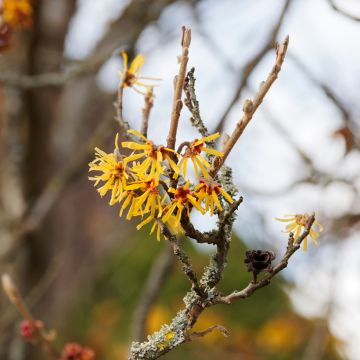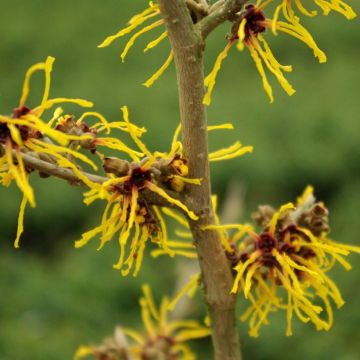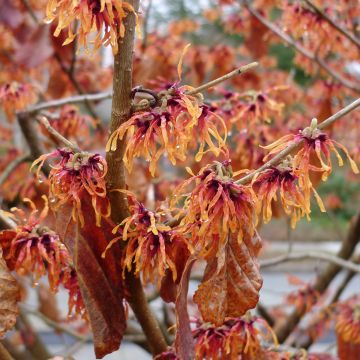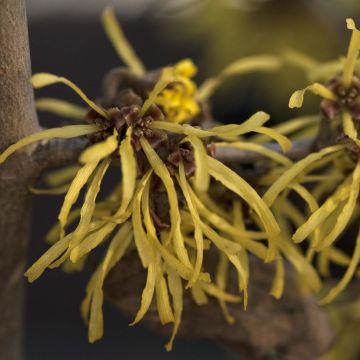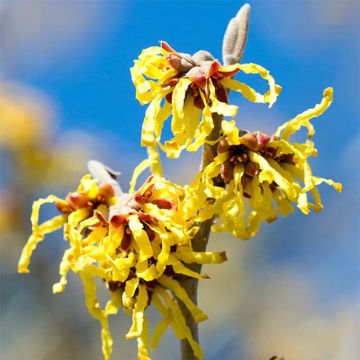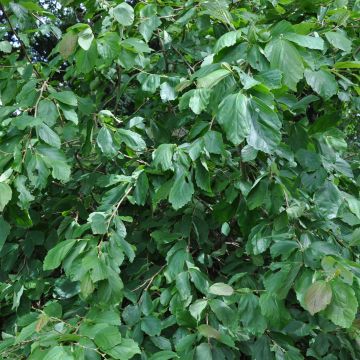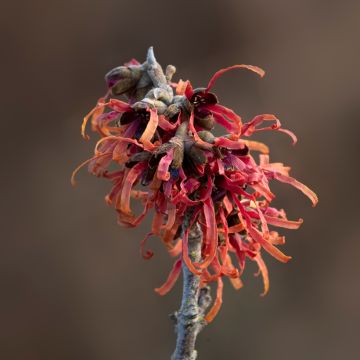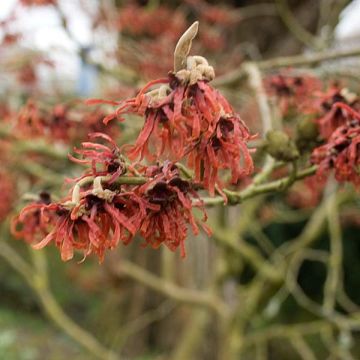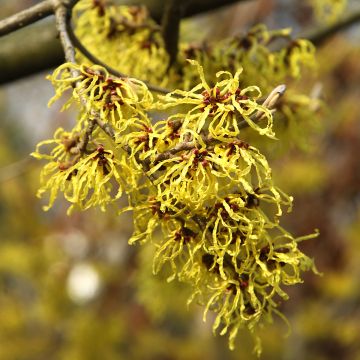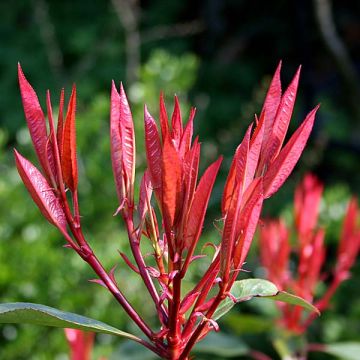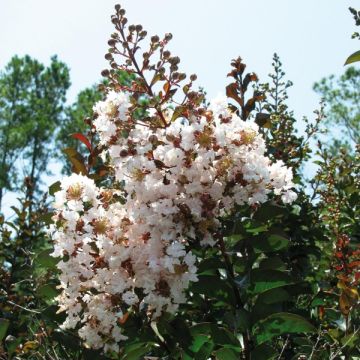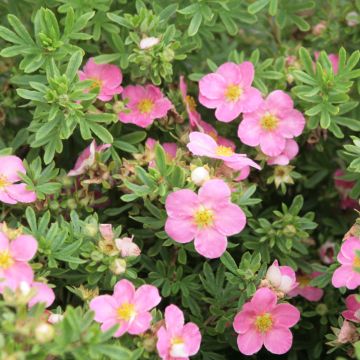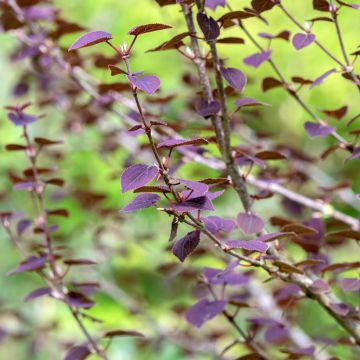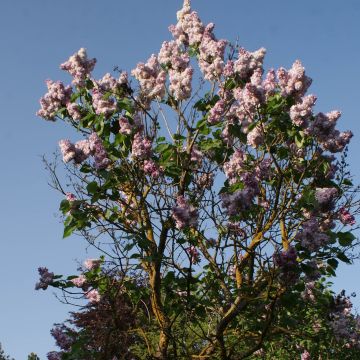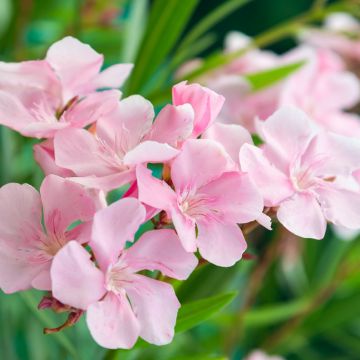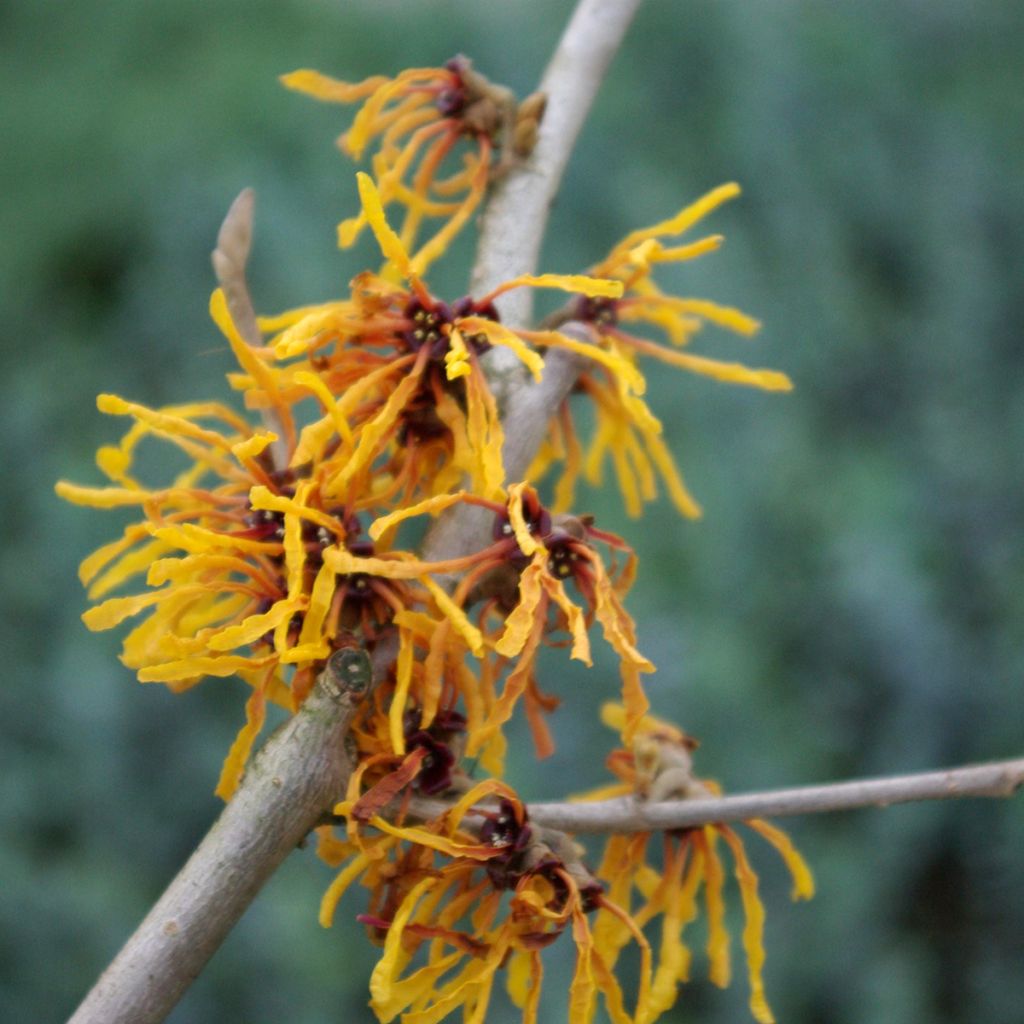

Hamamelis x intermedia Orange Peel - Witch Hazel
Hamamelis x intermedia Orange Peel - Witch Hazel
Hamamelis x intermedia Orange Peel
Witch hazel
This plant carries a 24 months recovery warranty
More information
We guarantee the quality of our plants for a full growing cycle, and will replace at our expense any plant that fails to recover under normal climatic and planting conditions.
From €5.90 for pickup delivery and €6.90 for home delivery
Express home delivery from €8.90.
Does this plant fit my garden?
Set up your Plantfit profile →
Description
Hamamelis x intermedia 'Orange Peel' is a variety of Witch Hazel with beautiful orange flowers. Clearly visible on the naked wood, the flowers that appear in the middle of winter create a scene of great beauty. The habit of this variety is not spreading like the others, but narrower, making it easily recognizable. Its stems are adorned with leaves resembling those of the hazel tree, a beautiful dark green. In autumn, they gradually turn yellow, orange, and red, in a spectacle that never gets old. The ornamental qualities of this shrub require a little patience, as its growth is slow.
Hamamelis gives its name to the family of Hamamelidaceae to which it belongs, as well as to plants appreciated by enthusiasts and collectors: Parrotia (or ironwood), Fothergilla, Loropetalum, or Disanthus. The Hamamelis genus has only five species, three from North America and two from Asia, Hamamelis japonica and H. mollis, which through cross-breeding have given rise to H. x intermedia. 'Orange Peel' is a relatively old variety, obtained by Robert and Jelena de Belder and brought to the market by the arboretum of Kalmthout (Belgium, north of Antwerp) in 1998. Literally meaning "orange peel," it owes its name to both the colour of its flowers and the width of the petals, which is greater than in other cultivars. Its habit is also different, being noticeably narrower than most varieties with a spreading silhouette. It forms a few very upright main branches, with a fairly closed angle to the vertical, and as it ages, it tends to round off. At maturity, it will measure approximately 3m in height and 2m in width, which will take about twenty years. In January-February, or February-March depending on the region and climate, the naked wood is covered with small flowers of intense orange, formed by four petals in the shape of slightly frizzy filaments attached to a purple calyx. With their spider-like grace, the flowers bloom in good weather and are capable of folding up to protect themselves from too cold temperatures. Slightly fragrant, they brighten up the dark winter days with their orange-gold colour. The foliage appears after flowering: measuring approximately 10 to 12cm long and 6 to 8cm wide, the leaves are oval in shape. Dark green on the upper side and lighter on the underside, they have well-marked veins. They are carried by short petioles of 1cm and are slightly pendulous. They constitute the shrub's second ornamental asset when they create a polychromatic symphony in shades of yellow, orange, and red in autumn, before finally falling to the ground.
Hamamelis x intermedia 'Orange Peel' likes humus-rich, limestone-poor, fresh, and light soils. It particularly associates well with acid-loving plants, allowing you to create a flower-filled scene all year round. The charming Magnolia stellata, with its star-shaped flowers of immaculate white, takes over in March and April, transitioning to Rhododendrons and Azaleas. From the small Rhododendron yakushimanum 'Silberwolke' with its pretty pink flowers in May-June, to the giant Rhododendron ponticum, which can reach 5m in height and offers a violet-colored flowering in late spring, they have dark green foliage that will enhance the orange flowers of the Hamamelis. Then, you just have to choose from the range of Hydrangeas (Hydrangea) to flower your summer until autumn, when the Camellia sasanqua will take over.
Report an error about the product description
Plant habit
Flowering
Foliage
Botanical data
Hamamelis
x intermedia
Orange Peel
Hamamelidaceae
Witch hazel
Cultivar or hybrid
Other Hamamelis - Witch-hazel
Planting and care
Thanks to its narrower habit compared to other cultivars, the 'Orange Peel' Hamamelis x intermedia can easily be planted near the house, and even on a patio, to fully enjoy its flowering and fragrance. A sunny position in winter, protected by a wall or deciduous trees in partial shade for the rest of the year, is preferred over scorching sun. Being intolerant to limestone, it should be grown in acid soil, or at least in non-limestone soil enriched with leaf compost. It is advisable to be generous, as soil enrichment will also increase its water retention capacity, especially in summer, which is the least favourable season for Hamamelis as they dislike dry conditions. Mulching around the base of the plant will help maintain moisture during this season. A sufficiently deep and humus-bearing soil, even on limestone subsoil, should not hinder the growth of the Hamamelis.
Planting period
Intended location
Care
This item has not been reviewed yet - be the first to leave a review about it.
Hedge shrubs
Haven't found what you were looking for?
Hardiness is the lowest winter temperature a plant can endure without suffering serious damage or even dying. However, hardiness is affected by location (a sheltered area, such as a patio), protection (winter cover) and soil type (hardiness is improved by well-drained soil).

Photo Sharing Terms & Conditions
In order to encourage gardeners to interact and share their experiences, Promesse de fleurs offers various media enabling content to be uploaded onto its Site - in particular via the ‘Photo sharing’ module.
The User agrees to refrain from:
- Posting any content that is illegal, prejudicial, insulting, racist, inciteful to hatred, revisionist, contrary to public decency, that infringes on privacy or on the privacy rights of third parties, in particular the publicity rights of persons and goods, intellectual property rights, or the right to privacy.
- Submitting content on behalf of a third party;
- Impersonate the identity of a third party and/or publish any personal information about a third party;
In general, the User undertakes to refrain from any unethical behaviour.
All Content (in particular text, comments, files, images, photos, videos, creative works, etc.), which may be subject to property or intellectual property rights, image or other private rights, shall remain the property of the User, subject to the limited rights granted by the terms of the licence granted by Promesse de fleurs as stated below. Users are at liberty to publish or not to publish such Content on the Site, notably via the ‘Photo Sharing’ facility, and accept that this Content shall be made public and freely accessible, notably on the Internet.
Users further acknowledge, undertake to have ,and guarantee that they hold all necessary rights and permissions to publish such material on the Site, in particular with regard to the legislation in force pertaining to any privacy, property, intellectual property, image, or contractual rights, or rights of any other nature. By publishing such Content on the Site, Users acknowledge accepting full liability as publishers of the Content within the meaning of the law, and grant Promesse de fleurs, free of charge, an inclusive, worldwide licence for the said Content for the entire duration of its publication, including all reproduction, representation, up/downloading, displaying, performing, transmission, and storage rights.
Users also grant permission for their name to be linked to the Content and accept that this link may not always be made available.
By engaging in posting material, Users consent to their Content becoming automatically accessible on the Internet, in particular on other sites and/or blogs and/or web pages of the Promesse de fleurs site, including in particular social pages and the Promesse de fleurs catalogue.
Users may secure the removal of entrusted content free of charge by issuing a simple request via our contact form.
The flowering period indicated on our website applies to countries and regions located in USDA zone 8 (France, the United Kingdom, Ireland, the Netherlands, etc.)
It will vary according to where you live:
- In zones 9 to 10 (Italy, Spain, Greece, etc.), flowering will occur about 2 to 4 weeks earlier.
- In zones 6 to 7 (Germany, Poland, Slovenia, and lower mountainous regions), flowering will be delayed by 2 to 3 weeks.
- In zone 5 (Central Europe, Scandinavia), blooming will be delayed by 3 to 5 weeks.
In temperate climates, pruning of spring-flowering shrubs (forsythia, spireas, etc.) should be done just after flowering.
Pruning of summer-flowering shrubs (Indian Lilac, Perovskia, etc.) can be done in winter or spring.
In cold regions as well as with frost-sensitive plants, avoid pruning too early when severe frosts may still occur.
The planting period indicated on our website applies to countries and regions located in USDA zone 8 (France, United Kingdom, Ireland, Netherlands).
It will vary according to where you live:
- In Mediterranean zones (Marseille, Madrid, Milan, etc.), autumn and winter are the best planting periods.
- In continental zones (Strasbourg, Munich, Vienna, etc.), delay planting by 2 to 3 weeks in spring and bring it forward by 2 to 4 weeks in autumn.
- In mountainous regions (the Alps, Pyrenees, Carpathians, etc.), it is best to plant in late spring (May-June) or late summer (August-September).
The harvesting period indicated on our website applies to countries and regions in USDA zone 8 (France, England, Ireland, the Netherlands).
In colder areas (Scandinavia, Poland, Austria...) fruit and vegetable harvests are likely to be delayed by 3-4 weeks.
In warmer areas (Italy, Spain, Greece, etc.), harvesting will probably take place earlier, depending on weather conditions.
The sowing periods indicated on our website apply to countries and regions within USDA Zone 8 (France, UK, Ireland, Netherlands).
In colder areas (Scandinavia, Poland, Austria...), delay any outdoor sowing by 3-4 weeks, or sow under glass.
In warmer climes (Italy, Spain, Greece, etc.), bring outdoor sowing forward by a few weeks.

































